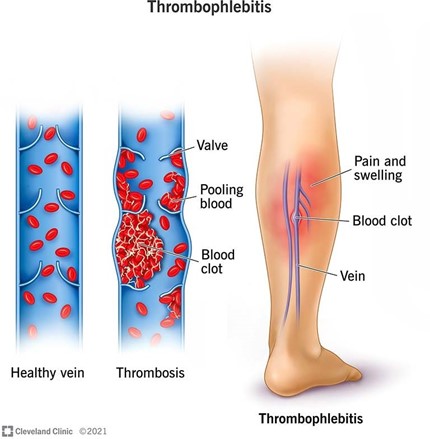The nurse preceptor is instructing the new nurse on appropriate communication techniques. The new nurse indicates a need for further teaching on using assertive communication, if she does which of the following when communicating with patients? Select one answer
Gives the same message to the patient verbally and nonverbally
Speaks firmly and positively
Is unapologetic
Agrees to do whatever the patient requests
The Correct Answer is D
Choice A reason: Gives the same message to the patient verbally and nonverbally is an example of using assertive communication, not a sign of needing further teaching on it. Assertive communication is a communication style that involves expressing one’s thoughts, feelings, and needs in a clear, respectful, and confident manner. It also involves using congruent verbal and nonverbal cues, such as eye contact, tone of voice, and body language, to reinforce the message and avoid confusion or misunderstanding. Therefore, this choice is incorrect.
Choice B reason: Speaks firmly and positively is an example of using assertive communication, not a sign of needing further teaching on it. Assertive communication is a communication style that involves expressing one’s thoughts, feelings, and needs in a clear, respectful, and confident manner. It also involves using firm and positive language, such as “I” statements, active verbs, and constructive feedback, to convey the message and avoid aggression or passivity. Therefore, this choice is incorrect.
Choice C reason: Is unapologetic is an example of using assertive communication, not a sign of needing further teaching on it. Assertive communication is a communication style that involves expressing one’s thoughts, feelings,
and needs in a clear, respectful, and confident manner. It also involves being unapologetic for one’s opinions, beliefs, or values, as long as they do not harm or disrespect others. It does not mean being rude or arrogant, but rather being honest and authentic. Therefore, this choice is incorrect.
Choice D reason: Agrees to do whatever the patient requests is a sign of needing further teaching on using assertive communication, not an example of it. Agreeing to do whatever the patient requests is a communication style that involves suppressing one’s thoughts, feelings, and needs in order to please or avoid conflict with others. It is a form of passive communication, which can lead to resentment, frustration, or loss of self-esteem. It can also compromise the quality of care or the safety of the patient or the nurse. Therefore, this choice is correct.
Nursing Test Bank
Naxlex Comprehensive Predictor Exams
Related Questions
Correct Answer is A
Explanation
Choice A reason: This is incorrect because it shows that the wound is healing well. Approximated wound edges mean that the edges are close together and aligned.
Choice B reason: This is correct because it shows that the wound is infected. Yellow, purulent drainage means that the wound has pus, which is a sign of inflammation and bacterial growth.
Choice C reason: This is incorrect because it shows that the wound is healing well. Pink granulation tissue means that the wound has new blood vessels and connective tissue, which fill the wound space and promote healing.
Choice D reason: This is incorrect because it shows that the wound is stable. Sutures in place mean that the wound has been closed with stitches, which hold the edges together and prevent bleeding.
Correct Answer is B
Explanation
Choice A reason: Implementation is a phase of the nursing process that involves carrying out the plan of care and performing the interventions and activities that were planned. It also involves monitoring the client’s response and progress, and documenting the outcomes. The nurse’s actions do not reflect this phase, as they are not performing any interventions or activities, but rather observing and measuring the client’s condition. Therefore, this choice is incorrect.
Choice B reason: Evaluation is a phase of the nursing process that involves measuring the outcomes and determining whether the interventions were effective in resolving or preventing the problem. It also involves comparing the actual outcomes with the expected outcomes, and modifying the plan of care if needed. The nurse’s actions reflect this phase, as they are assessing the client’s leg for signs of improvement or resolution of thrombophlebitis, and noting that the client is ready for discharge. Therefore, this choice is correct.
Choice C reason: Outcomes identification is a phase of the nursing process that involves setting measurable and realistic goals for the client’s health improvement or maintenance. The goals are based on the client’s needs, preferences, and values, and they are developed in collaboration with the client and the nurse. The nurse’s actions do not reflect this phase, as they are not setting any goals, but rather evaluating whether they have been met.
Therefore, this choice is incorrect.
Choice D reason: Assessment is a phase of the nursing process that involves collecting and analyzing data about the client’s health status, history, and environment. It also involves identifying any factors that may affect the client’s health or well-being, and forming a nursing diagnosis. The nurse’s actions do not reflect this phase, as they are not collecting or analyzing any new data, but rather reviewing the existing data and confirming the diagnosis. Therefore, this choice is incorrect.

Whether you are a student looking to ace your exams or a practicing nurse seeking to enhance your expertise , our nursing education contents will empower you with the confidence and competence to make a difference in the lives of patients and become a respected leader in the healthcare field.
Visit Naxlex, invest in your future and unlock endless possibilities with our unparalleled nursing education contents today
Report Wrong Answer on the Current Question
Do you disagree with the answer? If yes, what is your expected answer? Explain.
Kindly be descriptive with the issue you are facing.
